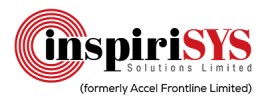i
WITS Innovation
Lab
Filter interviews by
WITS Innovation Lab Node JS Developer Interview Questions and Answers
WITS Innovation Lab Node JS Developer Interview Experiences
1 interview found
(2 Questions)
- Q1. Javascript simple questions
- Q2. What are Promise
- Ans.
Promises are objects representing the eventual completion or failure of an asynchronous operation.
Promises are used to handle asynchronous operations in JavaScript.
They can be in one of three states: pending, fulfilled, or rejected.
Promises can be chained together using .then() method.
They help in avoiding callback hell and writing cleaner asynchronous code.
Change key value in nested object key is provided
(2 Questions)
- Q1. What is Prototype
- Ans.
Prototype is an object that is associated with every functions and objects by default in JavaScript.
Prototype is used to add new properties or methods to existing objects or functions.
It allows objects to inherit properties and methods from other objects.
Changing the prototype of an object affects all instances of that object.
- Q2. What's middle ware
- Ans.
Middleware is software that acts as a bridge between different applications or components, allowing them to communicate and interact with each other.
Middleware is used to handle tasks such as authentication, logging, error handling, and more in web applications.
It can modify incoming requests, outgoing responses, or both.
Examples of middleware in Node.js include Express.js middleware like body-parser and morgan.
Skills evaluated in this interview
Top trending discussions






Interview questions from similar companies

I appeared for an interview before Aug 2016.
Interview Preparation Tips
Experience: I am vinothkumar from Dindugal, I was studied computer engineering in Madurai institute of engineering and technology at sivagangai, I am quality controller in RR DONNELLY at Chennai, my experience 2 years, my family staying in native, my father palanichami he is a former, my mother tamilselvi she is home maker and my one yelder brother Vijayakumar he is driver, I am interested area software engineer, my hobbies are listening music, reading book and news paper, playing and watching cricket
Tips: No comments
Round: Test
Experience: I am vinothkumar from Dindugal, I was studied computer engineering in Madurai institute of engineering and technology at sivagangai, I am quality controller in RR DONNELLY at Chennai, my experience 2 years, my family staying in native, my father palanichami he is a former, my mother tamilselvi she is home maker and my one yelder brother Vijayakumar he is driver, I am interested area software engineer, my hobbies are listening music, reading book and news paper, playing and watching cricket
Tips: No comments
Total Questions: 15
Round: Test
Experience: See my mentality
Tips: No comments
Duration: 45 minutes
Round: Group Discussion
Experience: Communication
Tips: No comments
Skills: Communication And Confidence

Interview Questionnaire
1 Question
- Q1. Difference between for and for each
- Ans.
For loop is used for iterating over a range of values while for each loop is used for iterating over elements of an array.
For loop is used when the number of iterations is known beforehand.
For each loop is used when the number of iterations is not known beforehand.
For loop can be used with any iterable object.
For each loop can only be used with arrays and other iterable objects.
For loop uses an index variable to access...

Software Developer Interview Questions & Answers
Apmosys Technologiesposted on 12 Apr 2023
I applied via Recruitment Consulltant and was interviewed before Apr 2022. There were 3 interview rounds.

25 MCQ questions online with time limit
Create webapp . Frontend, Backend , data encryption

I applied via Campus Placement and was interviewed in Sep 2023. There were 4 interview rounds.

Python based questions
(2 Questions)
- Q1. Python based questions
- Q2. Java based questions
(1 Question)
- Q1. Tell me about yourself

I appeared for an interview in Feb 2025.
They asked one coding question that is for star pattern question
Interview Preparation Tips

I applied via Recruitment Consulltant and was interviewed in Apr 2024. There was 1 interview round.
(1 Question)
- Q1. Pattern question based on the coding
- Ans.
This question tests your ability to identify and generate patterns in coding.
Understand the pattern: Analyze the given examples to identify the underlying rule.
Use loops: Implement loops to generate sequences based on the identified pattern.
Consider edge cases: Ensure your solution handles special cases, like empty arrays or single elements.
Optimize for performance: Think about the time complexity of your solution, esp...
Interview Preparation Tips

Software Developer Interview Questions & Answers
Snovasysposted on 1 Nov 2024
I applied via Campus Placement and was interviewed in Oct 2024. There were 2 interview rounds.
(2 Questions)
- Q1. Number series in aptitude
- Ans.
Number series in aptitude involves identifying the pattern in a sequence of numbers and predicting the next number.
Look for patterns such as arithmetic progression, geometric progression, or a combination of both.
Check for alternate numbers, differences between consecutive numbers, or multiplication factors.
Consider prime numbers, squares, cubes, or other mathematical operations applied to the series.
Example: 2, 4, 6, ...
- Q2. Relation ships in berbal
- Ans.
Relationships in verbal communication are crucial for effective collaboration and understanding.
Verbal communication involves both verbal and non-verbal cues
Active listening is key to building strong relationships in verbal communication
Clarity and conciseness in speech can enhance relationships
Empathy and understanding of others' perspectives are important in verbal relationships
(2 Questions)
- Q1. Explain the four branches of oops
- Ans.
The four branches of OOP are encapsulation, inheritance, polymorphism, and abstraction.
Encapsulation: Bundling data and methods that operate on the data into a single unit.
Inheritance: Allowing a class to inherit properties and behavior from another class.
Polymorphism: The ability for objects of different classes to respond to the same method call.
Abstraction: Hiding the complex implementation details and showing only ...
- Q2. Explain about the structures in c
- Ans.
Structures in C are user-defined data types that allow grouping of variables of different data types under a single name.
Structures are used to represent a record which consists of different data types.
They are defined using the 'struct' keyword.
Each variable in a structure is called a member.
Structures can be nested within other structures.
Example: struct employee { int emp_id; char emp_name[50]; float emp_salary; };
E...
Skills evaluated in this interview

I applied via Campus Placement and was interviewed in Dec 2023. There were 2 interview rounds.
Give a pattern and solved people enter into techinal round 1.I cleard this test and enter to tr1
(1 Question)
- Q1. They ask executye some patterns anf basic programs.i performed but don't select to tr2
Interview Preparation Tips
- Design Patterns
- Basic programs

Aptitude test details in the snovasys are best aptitude test details in snovasys and in the snovasys i thought like i need to learn more in the aptitude atmy strating of career and all all all alllllllllllllllllllllllll abc and the best buddy program we have invested on the internet today at the speed limit of data and the policy are not good we need to improve all the data and the data is not good of all the data to be shared and with in the organisation all the data is must and should need to learn careful and all the data is need to know all the must and should detailed actions are taken on their data
(2 Questions)
- Q1. Not good with my situation And
- Q2. What is your current salary What is your location
- Ans.
I am unable to provide my current salary as it is confidential.
My current salary is confidential and I am unable to disclose it.
I prefer to discuss salary expectations rather than disclosing my current salary.
Salary is negotiable based on the position and responsibilities.
I am more interested in discussing the opportunities and growth potential in this role.
Interview Preparation Tips
WITS Innovation Lab Interview FAQs
Tell us how to improve this page.
WITS Innovation Lab Interviews By Designations
- WITS Innovation Lab Software Engineer Interview Questions
- WITS Innovation Lab UI UX and Graphic Designer Interview Questions
- WITS Innovation Lab Sdet Lead Interview Questions
- WITS Innovation Lab Node JS Developer Interview Questions
- WITS Innovation Lab Business Development Executive Interview Questions
- WITS Innovation Lab Software Developer Interview Questions
- WITS Innovation Lab Java Developer Interview Questions
- WITS Innovation Lab Flutter Developer Interview Questions
- Show more
Interview Questions for Popular Designations
- Software Developer Interview Questions
- Java Developer Interview Questions
- Team Lead Interview Questions
- Project Engineer Interview Questions
- Web Developer Interview Questions
- Application Developer Interview Questions
- Salesforce Developer Interview Questions
- Lead Engineer Interview Questions
- Show more
Overall Interview Experience Rating
based on 1 interview experience
Interview Questions from Similar Companies
WITS Innovation Lab Node JS Developer Reviews and Ratings
based on 1 review
Rating in categories
3-5 Yrs
Not Disclosed
2-4 Yrs
Not Disclosed
|
Software Engineer
34
salaries
| ₹4 L/yr - ₹8 L/yr |
|
Assistant Software Engineer
23
salaries
| ₹3 L/yr - ₹6 L/yr |
|
Software Developer
12
salaries
| ₹3.3 L/yr - ₹7.4 L/yr |
|
Information Technology Recruiter
10
salaries
| ₹3 L/yr - ₹4 L/yr |
|
Front end Developer
8
salaries
| ₹3 L/yr - ₹6 L/yr |

HCL Infosystems

Zidio Development

Northcorp Software

Accel Frontline
- Home >
- Interviews >
- WITS Innovation Lab Interview Questions













